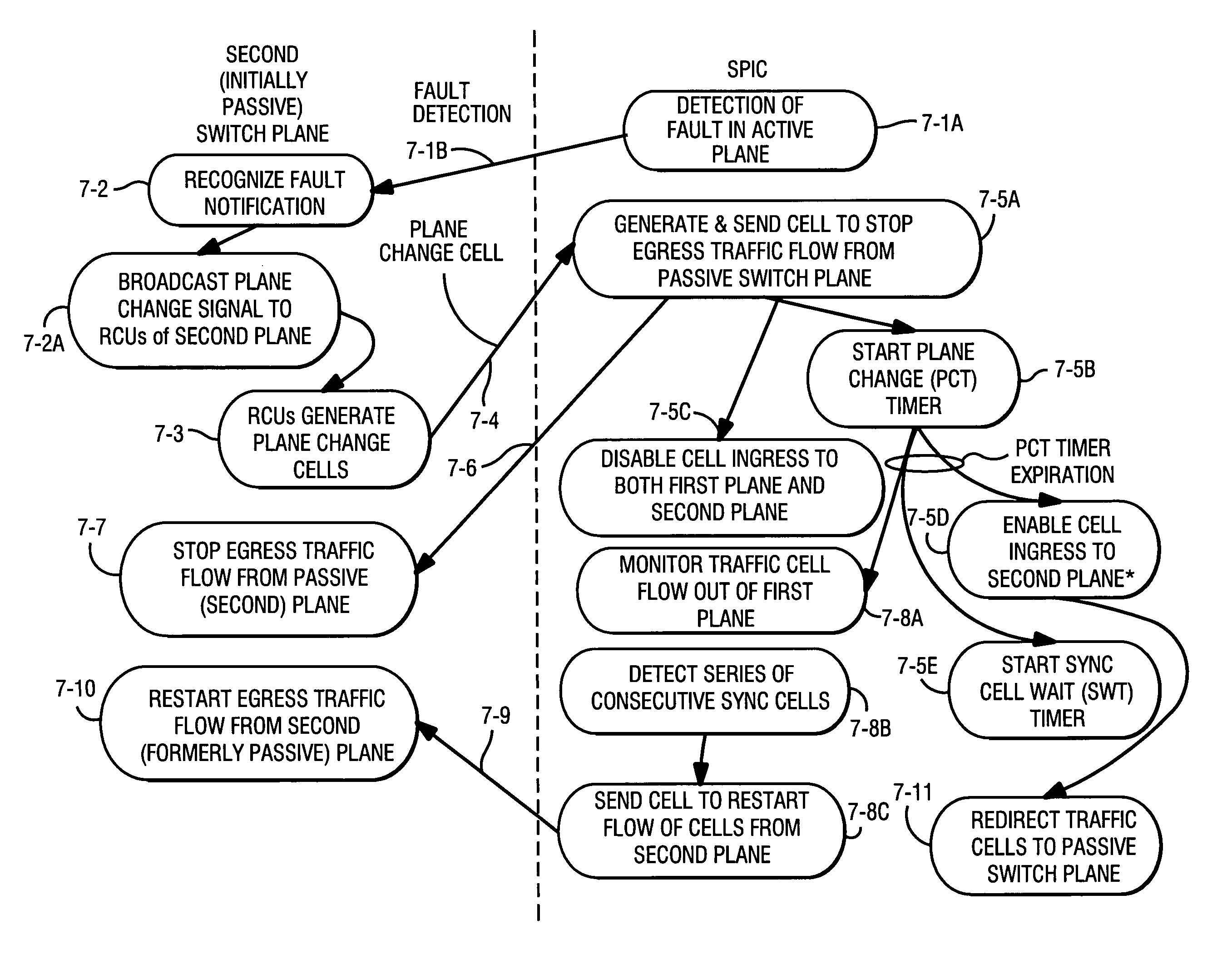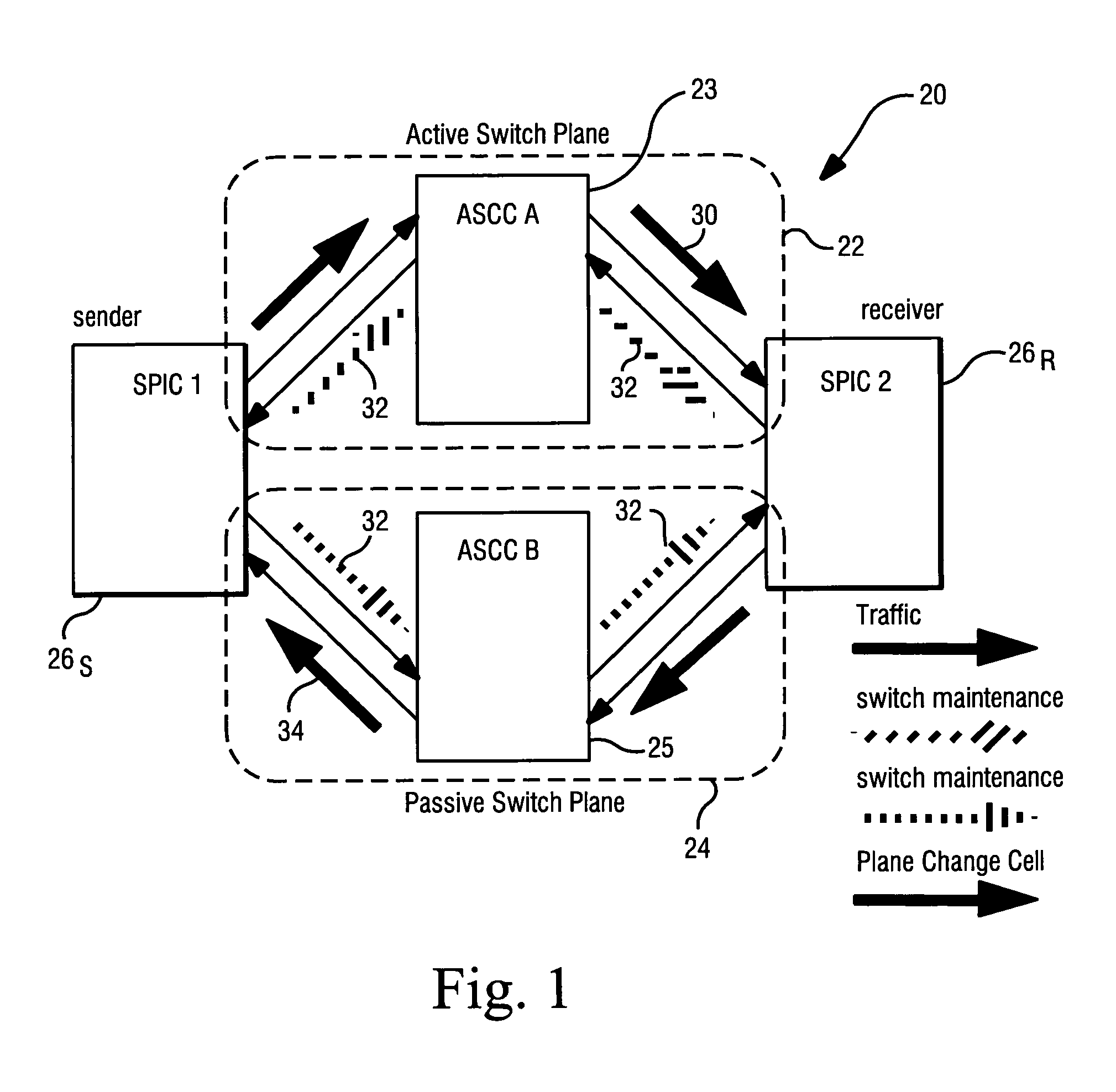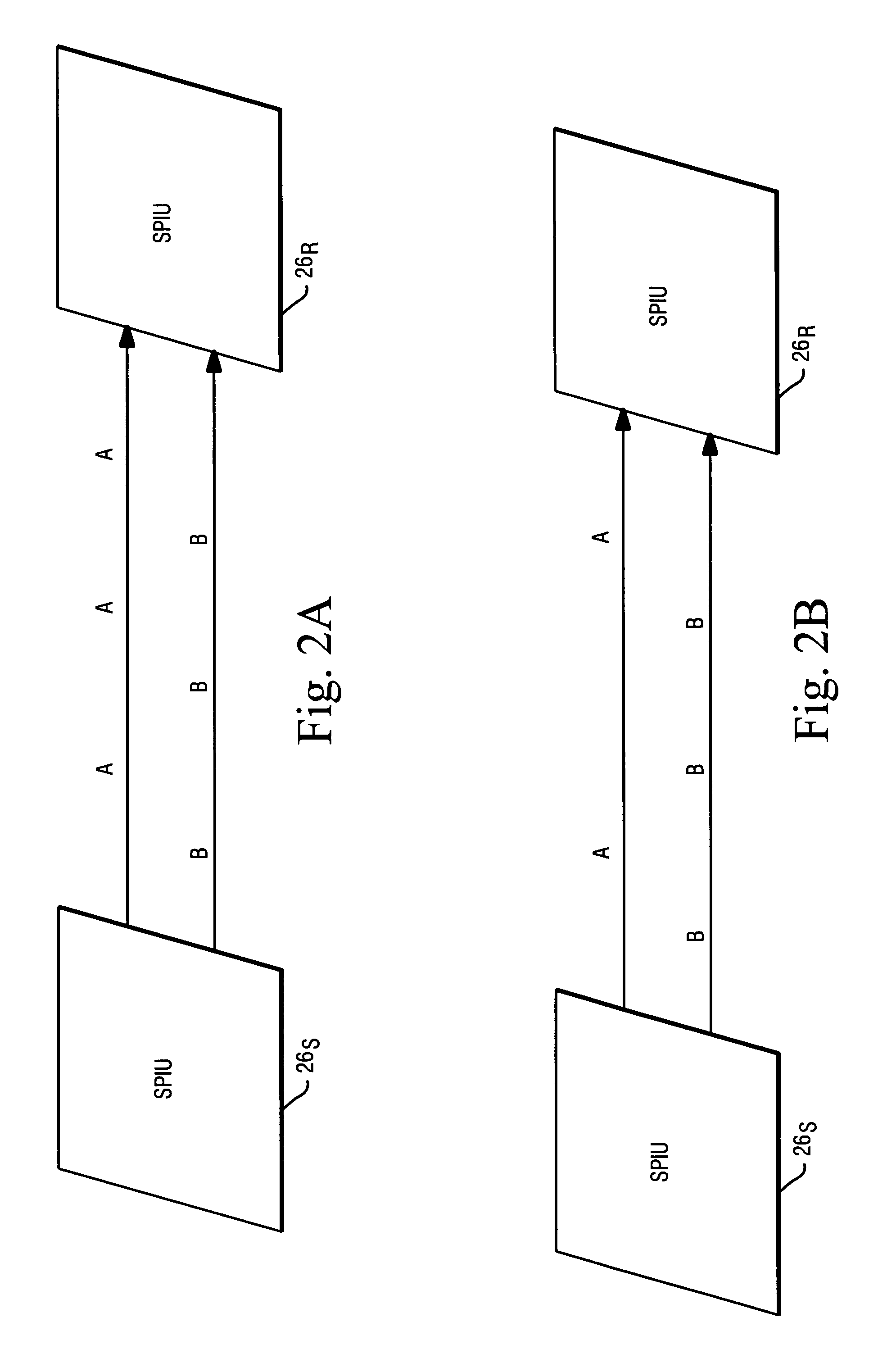Synchronous change of switchplane
a switch plane and switch plane technology, applied in data switching networks, frequency-division multiplexes, instruments, etc., can solve problems such as unwise handshaking techniques, complex redundant planes (which become active planes), and failure detection of active switch planes
- Summary
- Abstract
- Description
- Claims
- Application Information
AI Technical Summary
Benefits of technology
Problems solved by technology
Method used
Image
Examples
Embodiment Construction
[0032]In the following description, for purposes of explanation and not limitation, specific details are set forth such as particular architectures, interfaces, techniques, etc. in order to provide a thorough understanding of the present invention. However, it will be apparent to those skilled in the art that the present invention may be practiced in other embodiments that depart from these specific details. In other instances, detailed descriptions of well known devices, circuits, and methods are omitted so as not to obscure the description of the present invention with unnecessary detail.
[0033]FIG. 1 illustrates an example switching node 20 of an embodiment of the invention. The switching node 20 comprise any type of cell switch, such as (for example), an ATM cell switch or an Internet Protocol (IP) router. The switching node 20 includes a first switch plane 22 (having a first plane switch core 23); second switch plane 24 (having a second plane switch core 25); sender switch port ...
PUM
 Login to View More
Login to View More Abstract
Description
Claims
Application Information
 Login to View More
Login to View More - R&D
- Intellectual Property
- Life Sciences
- Materials
- Tech Scout
- Unparalleled Data Quality
- Higher Quality Content
- 60% Fewer Hallucinations
Browse by: Latest US Patents, China's latest patents, Technical Efficacy Thesaurus, Application Domain, Technology Topic, Popular Technical Reports.
© 2025 PatSnap. All rights reserved.Legal|Privacy policy|Modern Slavery Act Transparency Statement|Sitemap|About US| Contact US: help@patsnap.com



